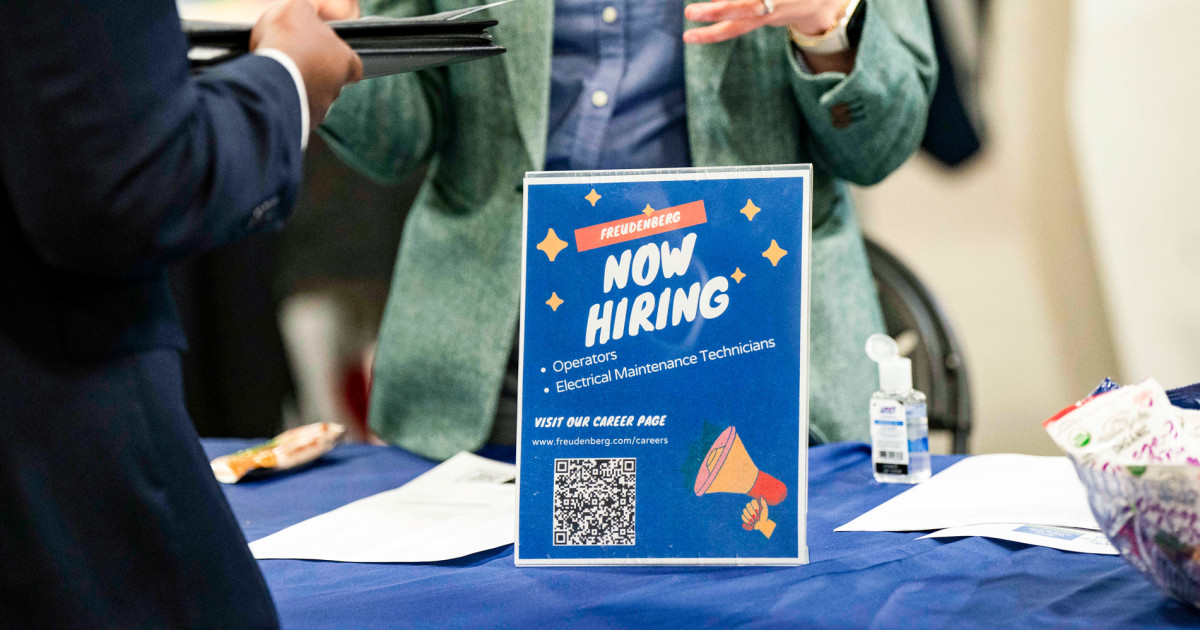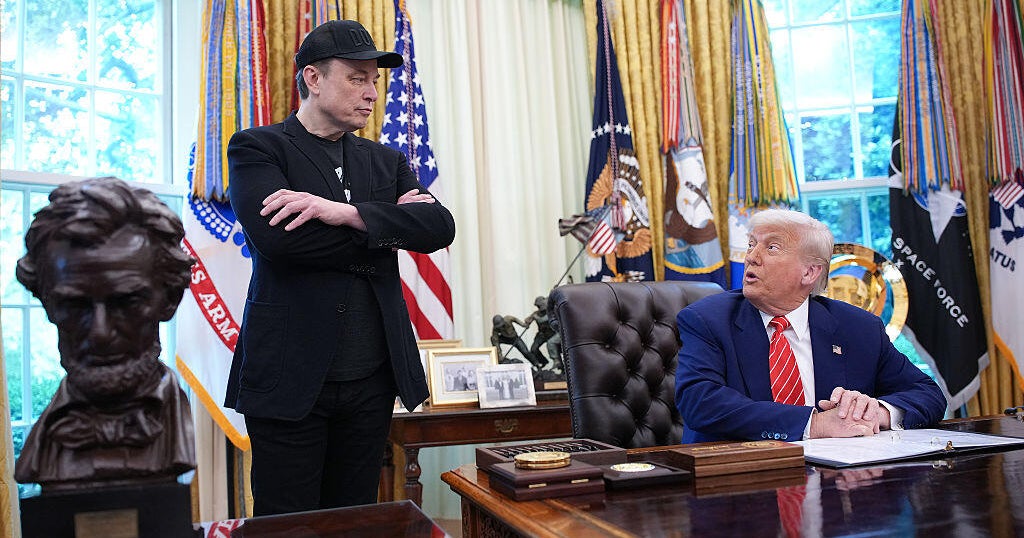Jobs data from May could show a mostly stable economy, but economists say Trump tariffs will soon bite

Signs are growing that President Donald Trump’s unprecedented tariffs strategy is starting to take a bigger bite out of the U.S. economy.
Still, the latest jobs data from the Bureau of Labor Statistics is likely to show some economic stability persisted into May.
Forecasts were for 120,000 new payrolls added in the last month; most economists consider anything above 100,000 a healthy figure — though it would still represent the fewest monthly jobs created since February and fall below the recent 12-month average of about 150,000.
Even if the job numbers beat forecasts, other data are already pointing to signs of a softening economy.
On Wednesday, private payroll processor ADP reported the weakest monthly jobs total since March 2023. While economists say ADP’s data often align with the official BLS data, the trend is clear, with ADP reporting fewer jobs added in five of the past seven months.
A separate report from the Institute for Supply Management showed that activity at U.S. service firms unexpectedly contracted last month for the first time in nearly a year, while hiring decelerated.
On Thursday, the Department of Labor reported weekly jobless claims came in higher than expected, reaching their highest level since October — while continuing unemployment claims remained elevated, an indication that it is taking longer for out-of-work people to find a job.
“We’re throttling back — and the damage from the trade war is still coming,” Mark Zandi, chief economist at Moody’s Analytics, told NBC News.
Zandi said forthcoming inflation readings are likely to reflect firms raising prices due to Trump’s import taxes. Indeed, a Federal Reserve survey released Wednesday indicated “widespread reports” of companies “expecting costs and prices to rise at a faster rate going forward,” with higher tariffs “putting upward pressure on costs and prices.”
Separately, a Congressional Budget Office study now estimates inflation will increase by an average of 0.4 percentage points in 2025 and 2026 as a result of Trump’s tariffs.
As prices begin to rise, consumer dollars won’t go as far, Zandi said. That will likely lead to a feedback loop of reduced economic activity and reduced hiring.
“The job market already feels fragile,” he added.
As demand softens “more palpably,” Zandi said, “we’ll start to see layoffs” — with BLS jobs data likely falling consistently below 100,000 in the coming months.
Already, firms are showing signs of holding back on investment and bringing on new workers. Earlier in the week, the BLS reported that the hiring rate remains stuck at levels last seen in 2014, when the U.S. economy was still emerging from the Great Recession.
Trump has claimed that thanks to his tariffs, the U.S. economy is “booming.” Yet he continues to pressure the Federal Reserve to lower interest rates, which would make it easier for businesses and consumers to borrow money. In a post on Truth Social Wednesday, he pointed to the weak ADP payrolls numbers as evidence that the economy needs support.
Analysts say that despite the gathering signs of economic deterioration, the bar remains high for the Federal Reserve to lower rates. Instead, the central bank will likely continue to err on the side of keeping interest rates elevated to ensure the pace of price growth remains under control, said Andrew Husby, senior U.S. economist at BNP Paribas financial group.
For consumers, that means relief is still not in sight.
”It’s going to take something obviously cracking in a sustained way” for the Fed to reduce borrowing costs, Husby said.
[title_words_as_hashtags



